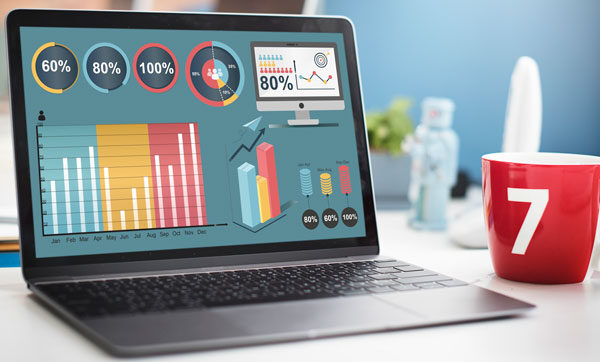Blogs

Why Website Speed is Your Silent Sales Killer
In today’s fast-paced digital world, website visitors expect instant results. However, when your website takes longer than three seconds to load, users tend to leave. Unfortunately, poor Website Speed Optimization not only frustrates visitors but also lowers your conversion rates. Moreover, many business owners overlook website speed, unaware of how severely it impacts their online sales.
In this blog, we will explore why website speed is a silent sales killer and provide actionable tips to enhance your website’s performance.
1. First Impressions Matter: Speed Creates Trust
A slow website can instantly damage your brand’s reputation. Moreover, users often associate slow loading with unprofessionalism and lack of reliability. In fact, research shows that over 50% of users abandon a site if it takes longer than three seconds to load.
To ensure a positive first impression, it’s essential to prioritize Website Speed Optimization. Fast-loading sites build trust, engage users, and increase conversion rates. Furthermore, Google’s PageSpeed Insights can help you analyze and improve your site’s speed.
2. User Experience and Website Speed Go Hand-in-Hand
Visitors expect seamless experiences when browsing online. However, a slow website disrupts user flow, leading to frustration and site abandonment. Poor navigation, delayed responses, and buffering issues drive potential customers away.
To improve user experience, implement effective Website Speed Optimization strategies. Compress images, leverage browser caching, and minimize unnecessary scripts. A smoother website ensures visitors stay longer and are more likely to convert. Cloudflare offers reliable solutions to optimize website speed.
3. The Connection Between Website Speed and SEO
Search engines like Google heavily prioritize user experience when ranking websites. As a result, slow-loading sites often face lower search visibility. Since page speed is a confirmed ranking factor, poor performance can directly impact your organic traffic.
On the other hand, faster websites not only rank higher but also provide better user experiences. By investing in Website Speed Optimization, you improve your chances of ranking on the first page. Additionally, Ahrefs offers in-depth SEO tools to monitor and enhance your website’s performance.
4. Mobile Users Expect Faster Experiences
With mobile browsing dominating the internet, speed matters more than ever. Mobile users are often on the go, seeking quick answers. A slow website can easily push them to competitors offering faster experiences.
Ensure your website is mobile-optimized by reducing unnecessary elements and using responsive design. Implement Accelerated Mobile Pages (AMP) to speed up content delivery. For further guidance, check out Google’s Mobile-Friendly Test.
5. The Financial Impact of Slow Website Speed
Website speed significantly influences your sales and revenue. In fact, studies reveal that even a one-second delay in load time can lead to a 7% reduction in conversions. For instance, for eCommerce sites, this loss could mean thousands in missed sales.
By improving your website’s speed, you create a faster checkout process, reduce cart abandonment, and ultimately increase completed transactions. Additionally, Shopify offers built-in tools and plugins to enhance your website’s performance.
6. Speed Impacts Competitor Advantage
In a competitive online market, speed can be your winning edge. Studies show that users prefer websites that load faster, even if the competitor offers a similar product or service. Losing customers to faster competitors can severely impact your bottom line.
Investing in Website Speed Optimization helps you stand out. Monitor competitor performance using tools like Semrush to ensure your site remains ahead in terms of speed and user experience.
7.Faster Websites Improve Customer Retention
A seamless browsing experience encourages users to return to your website. Returning visitors are more likely to convert into loyal customers, leading to higher lifetime value. On the other hand, slow websites make users hesitant to revisit, damaging long-term customer relationships.
Regular performance optimization and user experience improvements can significantly increase retention rates. Tools like Hotjar provide insights into how visitors interact with your website, helping you identify problem areas.
8. The Financial Impact of Slow Website Speed
Website speed directly influences your sales and revenue. Studies reveal that even a one-second delay in load time can lead to a 7% reduction in conversions. For eCommerce sites, this loss could mean thousands in missed sales.
By improving your website’s speed, you create a faster checkout process, reduce cart abandonment, and increase completed transactions. Shopify offers built-in tools and plugins to enhance your website’s performance.
9.Slow Websites Increase Bounce Rates
When a website takes too long to load, visitors leave without exploring further. This is known as a “bounce.” A high bounce rate indicates poor user experience, negatively affecting your website’s credibility and search rankings.
Website Speed Optimization minimizes bounce rates by ensuring visitors stay engaged. Engaged users explore more pages, boosting your site’s authority and increasing conversion potential. Use Google Analytics to monitor your bounce rates and identify areas for improvement.
10.Mobile Users Expect Faster Experiences
With mobile browsing dominating the internet, speed matters more than ever. Mobile users are often on the go, seeking quick answers. A slow website can easily push them to competitors offering faster experiences.
Ensure your website is mobile-optimized by reducing unnecessary elements and using responsive design. Implement Accelerated Mobile Pages (AMP) to speed up content delivery. For further guidance, check out Google’s Mobile-Friendly Test.
How to Implement Effective Website Speed Optimization
Boosting your website’s speed doesn’t have to be complicated. Follow these actionable tips for effective Website Speed Optimization:
- Compress Images: Use tools like TinyPNG to reduce image file sizes without losing quality.
- Minify CSS and JavaScript: Remove unnecessary code to ensure faster loading times.
- Leverage Browser Caching: Enable caching to store data for faster access.
- Use a Content Delivery Network (CDN): Distribute content across multiple servers for quicker access.
- Regularly Monitor Performance: Continuously check website speed using tools like GTmetrix.
Conclusion
A slow website is more than just a minor inconvenience; in reality, it’s a silent sales killer. By ignoring Website Speed Optimization, you risk losing valuable customers and revenue. However, with simple adjustments and the right tools, you can create a lightning-fast website that boosts conversions while also enhancing user experience.
For expert assistance in optimizing your website speed, consider partnering with professionals like American Webtech. Don’t wait — take action today and watch your sales grow!



